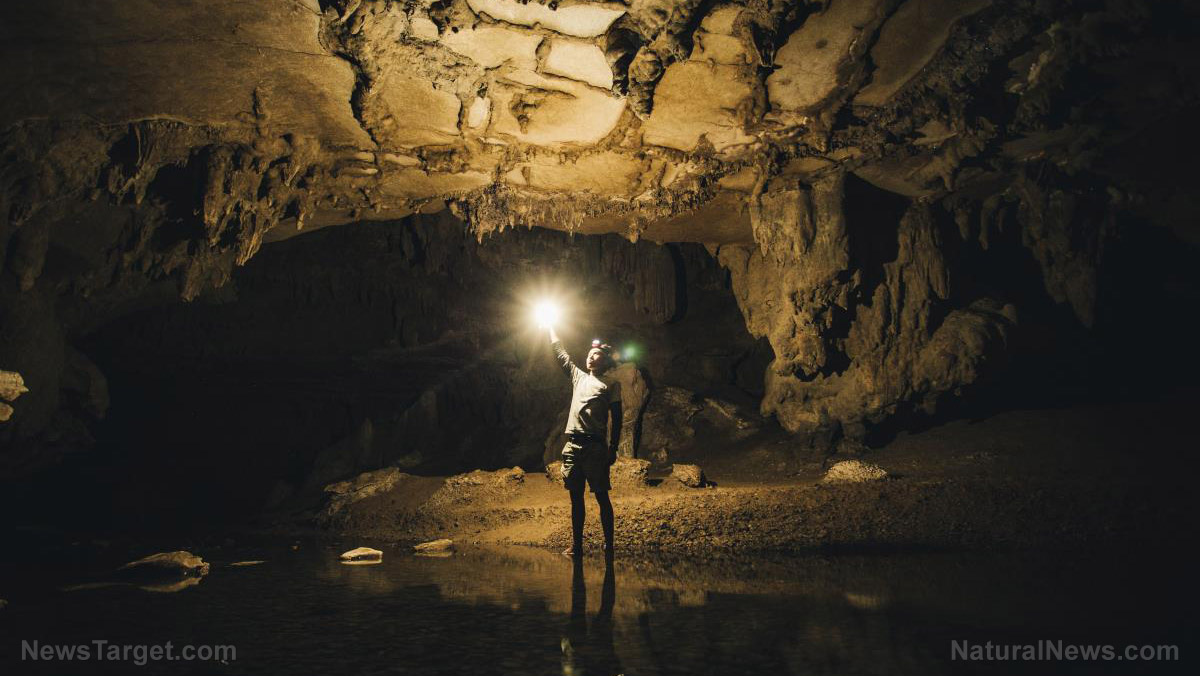SPACE TOURISM: First space hotel to begin construction in 2025
03/09/2021 / By Virgilio Marin

The Orbital Assembly Corporation (OAC), a construction firm that focuses on space colonization, plans to build the first “space hotel” in 2025. In a virtual press junket on Jan. 29, OAC described the space hotel as a large, wheel-shaped structure that spins to generate artificial gravity while orbiting Earth.
The structure called the “Voyager Station” would include many amenities commonly found in a cruise ship, such as restaurants, spas and movie houses. It would cater to space tourists as well as researchers and space agencies.
Development is already underway, though the construction of the actual station isn’t starting in four years. The OAC team, which includes veteran engineers, pilots and architects from the National Aeronautics and Space Administration (NASA), is currently working on small-scale models and prototype robotic builders in preparation for building what would be the first commercial space station.
What the space hotel will look like
The Gateway Foundation founded OAC in 2018 to realize its vision of colonizing space, beginning with the Voyager Station and a bigger, more ambitious spaceport called “the Gateway,” a massive space hotel-cum-terminal for anyone entering or leaving Earth.
The firm is currently focusing its efforts on the more modest but no less daunting Voyager Station. Inspired by concepts conceived by rocket scientist Wernher von Braun, one of the primary orchestrators of NASA’s Apollo program, the 650-foot-wide structure would revolve around the planet every 90 minutes and spin continuously to generate near-lunar gravity.
It would comprise two concentric structural rings joined together with an intricate web of spokes. The inner ring would be the docking hub while the outer, much bigger ring would be a series of 24 pressurized, connected modules collectively called the “Habitation Ring.”
Each module measures 65 feet long and 40 feet wide and would have a different function – from hotel rooms to crew quarters to power and water facilities. OAC also envisions building viewing lounges, bars, concert venues, gyms, spas and many other amenities commonly found in a cruise ship. (Related: Goodbye Earth? Astrophysicist claims humans can move into a space colony in 15 years.)
The Voyager Station’s hotel could be operational starting 2027 and would be open to tourists, space agencies like NASA and anyone else who wishes to experience off-Earth living. Private companies and governments could also lease or buy some of the modules.
Developing the space station
Gateway Foundation President John Blincow said during the press event that OAC’s current plan is to build a small-scale prototype station and a free-flying microgravity facility to prove the viability of artificial gravity in outer space.
OAC plans to construct a 200-foot-wide prototype gravity ring that would be engineered to achieve Martian gravity, which is around 40 percent that of Earth. This “near-term demonstrator” ring would take two to three years to build. Once construction is completed, it would be installed in orbit and assembled for three days.
According to OAC representatives, the prototype gravity ring would act as the company’s test base for many of the technologies to be used for building the Voyager Station. It could also be used as a research platform for space agencies and private aerospace firms interested in the effects of microgravity.
The firm is also developing prototypes of its robotic builder Structure Truss Assembly Robot (STAR), which would put together the frame of the Voyager Station and Gateway in orbit. OAC would use the prototypes to test the technology on Earth and in outer space.
STAR is poised to become the first robot to build a space station in low-Earth orbit. According to OAC fabrication manager Tim Clements, it would serve as “the structural backbone of future projects in space.”
Once the assembly in space is underway, the company would use a robotic observer drone to remotely keep tabs on STAR, according to Tim Alatorre, Gateway Foundation executive team member and one of the station’s designers.
“It’s going to be our eyes on the job site,” Alatorre said. “The observer drone operates in a support function. It can perch on existing craft. It can also be fully reusable and can fly and have a free-flight mode on extended missions.” (Related: Spying from space: New satellite can produce “crystal clear” images of any place on Earth.)
The firm did not disclose the cost of the project but noted that recent tech advancements made it more economically viable to put large objects in orbit. The average cost of launching material used to be around $8,000 per kilogram, according to Alatorre, but the emergence of reusable rockets such as SpaceX’s Falcon 9 brought this to $2,000 and the price would likely drop to a few hundred dollars with SpaceX’s upcoming Starship.
If all goes according to plan, Voyager Station’s hotel would become the first commercial space station operating with artificial gravity.
Learn more about mind-blowing plans to colonize space at Space.news.
Sources include:
Tagged Under: cool science, future science, future tech, goodtech, innovation, robotics, robots, science and technology, Space, space colonization, space exploration, space habitats, space hotel, space station, space tourism
RECENT NEWS & ARTICLES
COPYRIGHT © 2017 SPACE TOURISM NEWS





















